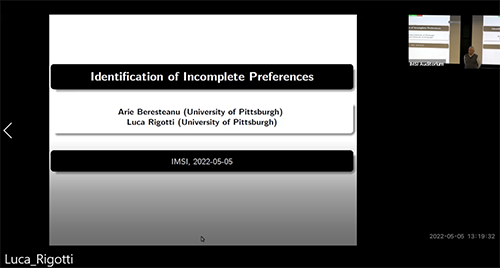Identification of Incomplete Preferences
Presenter
May 5, 2022
Abstract
We provide a sharp identification region for discrete choice models in which consumers' preferences are not necessarily complete and only aggregate choice data is available to the analysts. Behavior with non complete preferences is modeled using an upper and a lower utility for each alternative so that non-comparability can arise. The identification region places intuitive bounds on the probability distribution of upper and lower utilities. We show that the existence of an instrumental variable can be used to reject the hypothesis that all consumers' preferences are complete, while attention sets can be used to rule out the hypothesis that all individuals cannot compare any two alternatives. We apply our methods to data from the 2018 mid-term elections in Ohio.
